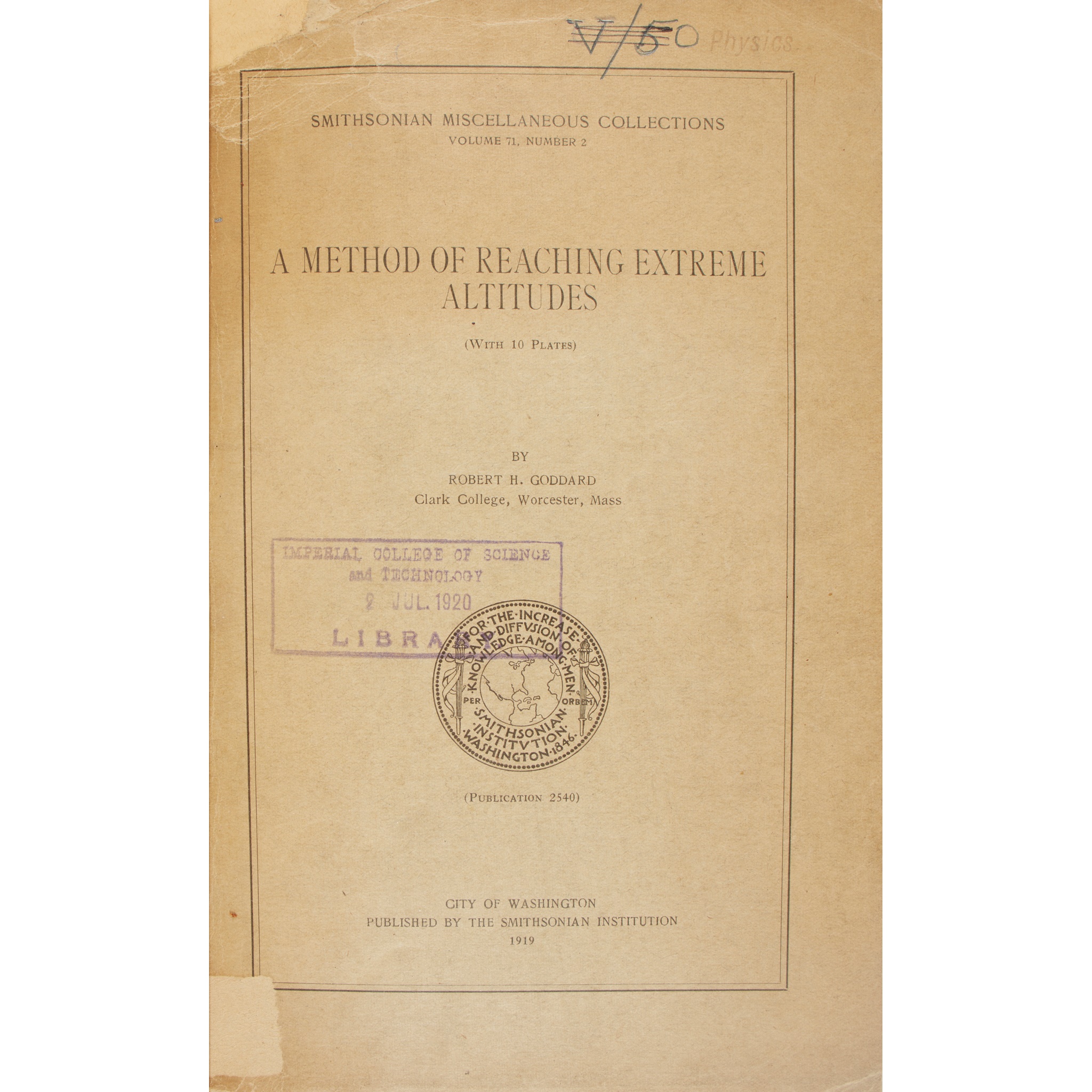Goddard, Robert H.
A Method of Reaching Extreme Altitudes
£3,780
Rare Books, Manuscripts, Maps & Photographs
Auction: 07 February 2024 from 10:00 GMT
Description
City of Washington: The Smithsonian Institution, 1919. First edition, 8vo, 10 photographic plates, original wrappers bound into modern blue boards, a few stamps and markings to upper wrapper and title page including the Imperial College of Science and Technology and a 'withdrawn' stamp and the numbers '2734' in red biro, modern ownership signature to free-endpaper
Footnote
A rare, early work on space travel.
Robert Hutchings Goddard (1882-1945) was an early pioneer in the theory of space travel. He posited that rockets may be capable of extra-terrestrial travel in a time when most scientists believed that no rocket was capable of travelling beyond Earth’s upper atmosphere.
Working at the Worchester Polytechnic Institute in Massachusetts, Dr Goddard developed a mathematical theory of rocket propulsion, before receiving patents for rockets in 1914 and 1915. Despite stringent disagreement from many of his peers, in 1915 he stated publicly that space travel was possible.
In 1916, Goddard was granted research funding by the Smithsonian Institution – work which supported the development of weapons during the First World War. The funding enabled Goddard to pursue his great interest – space travel. Goddard published A Method of Reaching Extreme Altitudes in 1919, exploring rocket propulsion using gasoline and liquid oxygen. Goddard’s theory stated that a rocket would have to travel at the speed of 6.95 miles per second in a vacuum to overcome the pull of Earth's gravity and reach space, and predicted that human beings could reach the moon.

